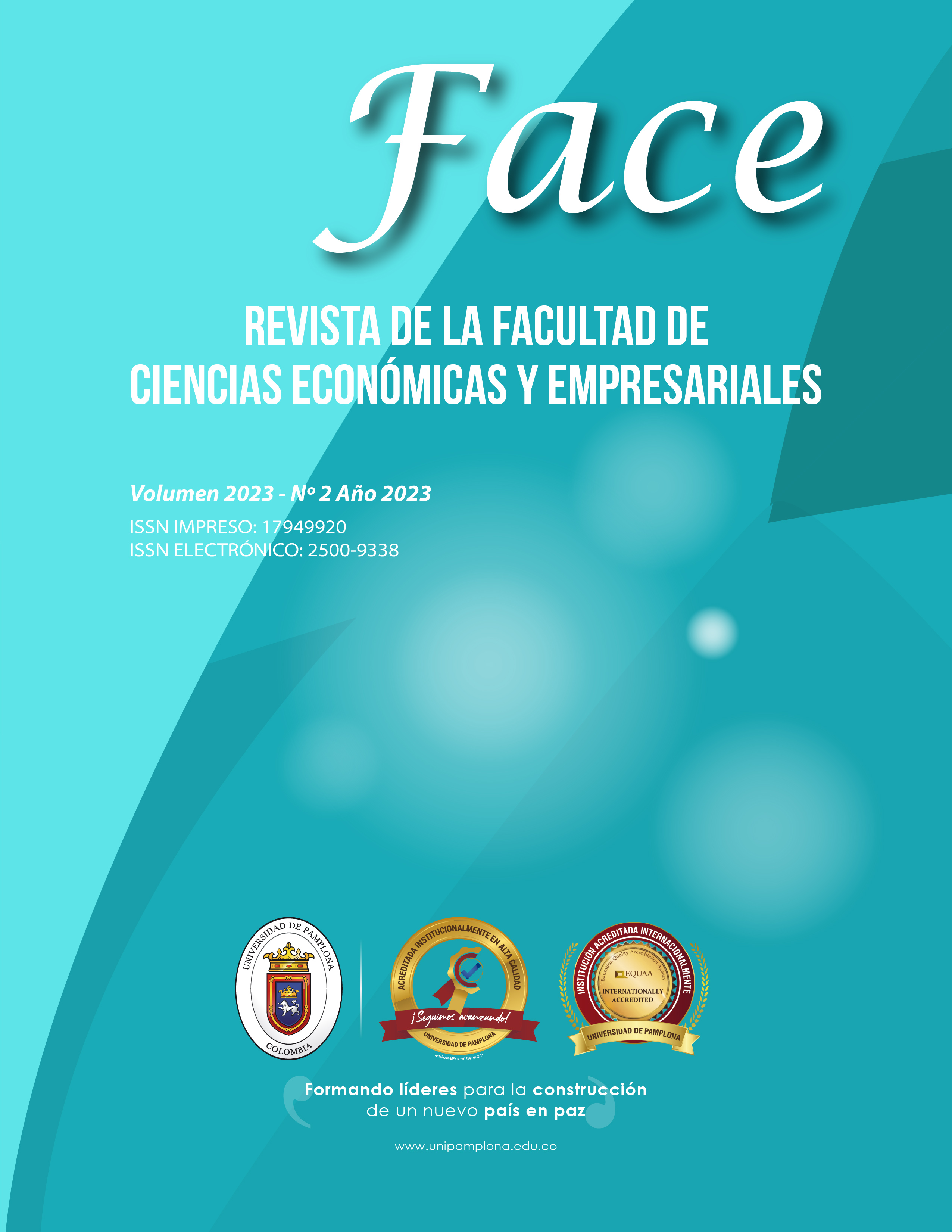PERCEPTION OF YOUNG PEOPLE AGED 20 TO 30 OF LABOR INCLUSION IN A CITY
DOI:
https://doi.org/10.24054/face.v23i2.2463Keywords:
Inclusion, Perception, RightsAbstract
This is a quantitative descriptive study referring to labor inclusion and perception of situations of inclusion or discrimination at work. Carried out with people between the ages of 20 and 30, where it is reflected that the perception of non-inclusion is detected more towards others than towards the respondents. More than half declare inclusion as employment integration, rights, equality and acceptance without including any concept of gender in the declaration. More than 60% of respondents have witnessed non-inclusion in others because of image or appearance, 59% because of the person's physique, and 55.5% because of gender or gender orientation. Almost a quarter of the respondents have suffered from being discriminated against because of their appearance or image, because of their physique or because they are a woman. There is a statistically significant difference between the perceptions of another and the experience of non-inclusion events, highlighting the first (the perception of the other) and therefore an implicit and non-explicit statement of the existence of non-inclusion in the research environment.
Downloads
References
CNDH.(2015). El derecho humano al trabajo de las personas indígenas. Primera edición. https://www.cndh.org.mx/sites/all/doc/cartill as/2015-2016/01-DH-trabajo-indigenas.pdf
Erausquin. Sulle. Garcia. (2016). La vivencia como unidad de análisis de la conciencia: sentidos y significados en trayectorias de profesionalización de psicólogos y profesores en comunidades de práctica. Anuario de Investigaciones, vol. XXIII, 2016, pp. 97-104 Universidad de Buenos Aires Buenos Aires, Argentina. https://www.redalyc.org/pdf/3691/36915269 6009.pdf
Fernández (2007) Integración laboral: estrategias organizacionales y enfoque de contenidos. Universidad de la Rioja. file:///C:/Users/zahori/Downloads/Dialnet- IntegracionLaboral-2483096%20(2).pdf
Fundación para life ( 2019) Pulido. Magaña. (2019 )La inclusión productiva de las personas con discapacidad en la Ciudad de México. capacitarte. N2 – 2019.
https://trabajo.cdmx.gob.mx/storage/app/m edia/REVISTA_CAPACITART_2_final_digit al_agosto21.pdf
Giulliani. Montero. (2012). El marketing social, el marketing relacionado con causas sociales y la responsabilidad social empresarial. Vol 15, no 29. Universidad del Centro Educativo Latinoamericano Rosario, Argentina. https://www.redalyc.org/pdf/877/877241460 03.pdf
Hernández, R., Fernández, C., Baptista, P. (2010) Metodología de la investigación. México DF. McGRAW-HILL / Interamericana editores, S.A. de C.V. Quinta edición. https://www.esup.edu.pe/descargas/dep_in vestigacion/Metodologia%20de%20la%20i nvestigaci%C3%B3n%205ta%20Edici%C3
%B3n.pdf
IDL (2023) Diccionario. https://www.indifferentlanguages.com/es/tr aducir/lat%C3%ADn- espa%C3%B1ol/includere
Instituto Nacional de Las Mujeres. (2003). Las mexicanas y el trabajo II. Primera edición. México. http://cedoc.inmujeres.gob.mx/documentos_download/100500.pdf
Muñoz-Pogossian B. Barrantes, A. (2016). OEA “Equidad e Inclusión Social: Superando desigualdades hacia sociedades más inclusivas”. http://www.oas.org/docs/inclusion_social/eq uidad-e-inclusion-social-entrega-web.pdf
Navarro M (2006). Modelos y regímenes de bienestar social en una perspectiva comparativa: Europa, Estados Unidos y América Latina. Desacatos no.21 Ciudad de México may./ago. 2006. https://www.scielo.org.mx/scielo.php?script=sci_arttext&pid=S1607-050X2006000200008
ONU (2018) La agenda 2030 y los objetivos de desarrollo sostenible , Una oportunidad para América Latina y el caribe. https://repositorio.cepal.org/bitstream/handl e/11362/40155/24/S1801141_es.pdf
ONU. (2018). ESTRATEGIA DE LAS NACIONES UNIDAS PARA LA INCLUSIÓN DE LA DISCAPACIDAD.
https://www.un.org/en/content/disabilitystrat egy/assets/documentation/UN_Disability_In clusion_Strategy_spanish.pdf
OPS. (2019). Marco conceptual e indicadores para monitorear la igualdad de género en la salud en las Américas. https://iris.paho.org/bitstream/handle/10665.2/51785/9789275321584_spa.pdf?sequen ce=5&isAllowed=y
Pogossian. Barrantes (2016) Equidad e Inclusión Social: Superando desigualdades hacia sociedades más inclusivas. OEA. http://www.oas.org/docs/inclusion_social/eq uidad-e-inclusion-social-entrega-web.pdf
Pulido. Magaña. (2019 )La inclusión productiva de las personas con discapacidad en la Ciudad de México. capacitarte. N2 – 2019. https://trabajo.cdmx.gob.mx/storage/app/m edia/REVISTA_CAPACITART_2_final_digit al_agosto21.pdf
Salazar (2015). La inclusión laboral en México: Avances y retos. Biblioteca Mexicana del conocimiento. https://www.stps.gob.mx/bp/gob_mx/libro- inclusion%20laboral%20en%20mexico- avances%20y%20retos%20version%20digi tal.pdf
Velázquez, F. (2020). La inclusión laboral LGBT en México. De dónde venimos y hacia dónde vamos. ADIL. https://adilmexico.com/columnas/la- inclusion-laboral-lgbt-en-mexico-de-donde- venimos-y-hacia-donde- vamos/#:~:text=Entre%20las%20primeras%20acciones%20que,a%20prestaciones% 20y%20beneficios%20igualitarios
Published
Versions
- 2023-05-25 (4)
- 2023-05-25 (3)
- 2023-05-25 (2)
- 2023-08-17 (1)
How to Cite
Issue
Section
License
Copyright (c) 2023 FACE: Revista de la Facultad de Ciencias Económicas y Empresariales

This work is licensed under a Creative Commons Attribution-NonCommercial-ShareAlike 4.0 International License.





